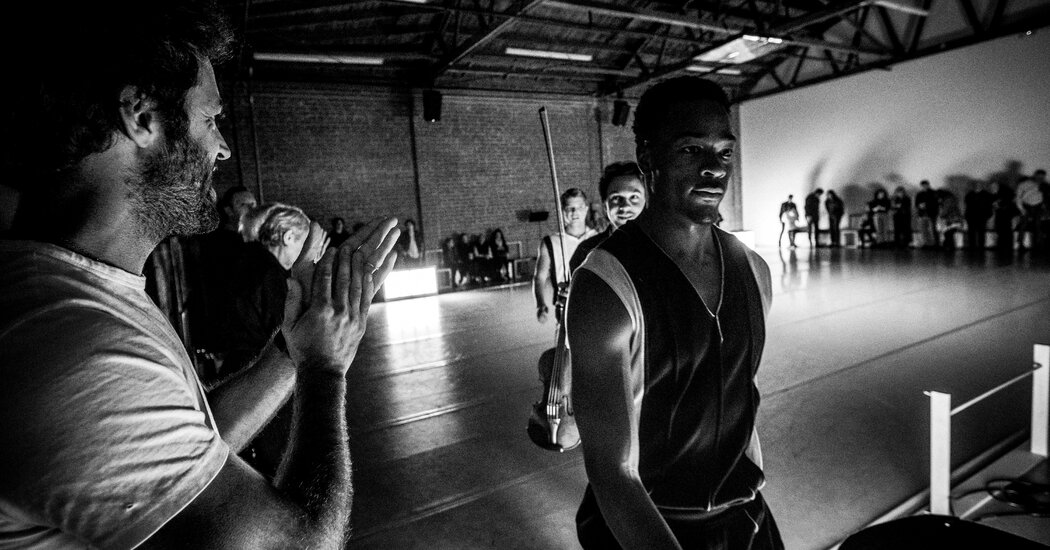Los Angeles may not be thought of as a dance town, but it has a rich legacy. It was here, in 1915, that the modern dance pioneers Ruth St. Denis and her husband Ted Shawn, established the Denishawn school and company, shaping and showcasing the first generation of American modern dancers, including Martha Graham, Doris Humphrey and Charles Weidman.
Hollywood not only attracted great dancers like Fred Astaire and Gene Kelly, but also produced its own constellation of choreographic stars, including Busby Berkeley, Hermes Pan and Jack Cole, as well as drawing big names like George Balanchine, who worked on several films. Lester Horton, one of the first choreographers to insist on a racially integrated company, established the Lester Horton Dance Theater here in 1946, a pioneering stage dedicated to modern dance.
But for all the talent Los Angeles has attracted over the years, and its success in founding other performing arts institutions, the city has struggled to establish lasting dance companies able to attract and maintain audiences and patronage.
These days, though, several young companies are trying hard to change that.
The L.A. Dance Project, co-founded over a decade ago by Benjamin Millepied, the acclaimed choreographer and former New York City Ballet dancer who went on to lead the Paris Opera Ballet, is expanding its downtown studio and performance space, doubling its seating capacity. It has also just entered an agreement with the Wallis Annenberg Center for the Performing Arts in Beverly Hills, a larger theater, to perform there.
The Los Angeles Ballet, which debuted in 2006, recently appointed its first solo artistic director, Melissa Barak. Barak — a Los Angeles native who previously founded her own company, Barak Ballet — is working to increase the company’s dancers, performances, operating budget and repertoire. Two alumni, Petra Conti and Eris Nezha, recently founded their own company, the Hollywood Ballet.
The contemporary dance company Bodytraffic has begun expanding its reach by performing in a wider array of neighborhoods, and recently brought on a new president: Gillian Wynn, a former music supervisor whose parents, the casino magnates Steve and Elaine Wynn, are both influential art collectors.
“Dance is something I would love to see get more visibility in L.A.,” said Kristin Sakoda, the director of the Los Angeles County Department of Arts and Culture. “We have incredible choreographers, dance makers, and artists. It would be great to have more opportunities for dance to be presented.”
By adding L.A. Dance Project — as well as presenting Bodytraffic and, more recently, the L.A. Ballet — the Wallis, in Beverly Hills, is “trying to make a home for dance in West L.A.,” said Robert Van Leer, who last year became its executive director and chief executive officer.
“Dance is really where we have a chance to have a larger impact,” he added, “helping the whole scene to grow.”
The scene has struggled in the past.
The original Los Angeles Ballet, founded in 1974 by John Clifford, a former principal dancer at New York City Ballet, closed after a decade. In 1983 the Joffrey Ballet became the resident dance company of the Los Angeles Music Center, but that arrangement lasted less than a decade.
Clifford said that in those days Los Angeles approached dance as something to bring from elsewhere — attracting leading international companies — rather than to originate.
“It felt more glamorous to import,” he said. “To bring in a big name company.”
But these days there are signs of a growing enthusiasm for dance.
The Glorya Kaufman School of Dance at the University of Southern California, which opened in 2015, has attracted prominent choreographers including William Forsythe and Kyle Abraham. Both the University of California, Los Angeles, and CalArts have active dance programs and the Debbie Allen Dance Academy offers dance classes with students each year performing a popular “Hot Chocolate Nutcracker.”
The Music Center’s Glorya Kaufman Presents Dance program at the Dorothy Chandler Pavilion this year is presenting Pina Bausch’s “The Rite of Spring” and “common ground[s]” (choreographed by Malou Airaudo and Germaine Acogny) on Feb. 8; Alvin Ailey American Dance Theater in March; The Joffrey Ballet’s Anna Karenina in June; and Ballet Hispánico’s Doña Perón in July.
This month, Abraham’s company, A.I.M, will present a program at the Wallis that includes a world premiere of Andrea Miller’s latest work. Abraham said he was encouraged by the dance activity in the city from companies like Lula Washington Dance Theater, the L.A. Contemporary Dance Company and the TL founded by Micaela Taylor as well as artists like Kevin Williamson, Marcella Lewis and Bret Easterling.
“People can use the excuse that the show is on the opposite side of town to not go, but the shows still sell out,” Abraham said. “There are people who are hungry to support dance.”
It was in part because of the city’s infamous car traffic that the L.A. Dance Project decided to establish a presence on the West Side, at the Wallis.
“There are a lot of people who won’t cross the highway,” Millepied said. “By being there, we’re going to cultivate another audience.”
While classical music and the opera have long been supported by wealthy families and the art world continues to mushroom, dance in Los Angeles has struggled to build a solid, lasting base of patrons.
“This concept is still foreign to Angelenos,” said Tina Finkelman Berkett, the artistic director of Bodytraffic. “They’ve maybe seen a ‘Nutcracker’ or ‘So You Think You Can Dance,’ but many people have never been to a contemporary dance concert.”
It is in part the accessibility of Bodytraffic that made Wynn want to immediately become involved with the company after seeing it for the first time.
“It was one of those love at first sight moments — how in the world did I miss this company?” Wynn said. “I’m excited to have the opportunity to help grow it and raise the profile. We really want to be known as Los Angeles’ dance company.”
Conti and Nezha — the husband-and-wife team starting the Hollywood Ballet — want their new company to lean into what the city is most famous for. “Why don’t we create a new genre that is inspired by the Hollywood movie industry, new productions that will appeal to new audiences that wouldn’t normally go to see a ‘Sleeping Beauty’?” Conti said.
The company plans to mount productions of new ballets based on famous movies and hopes to “bring back the celebrity of ballet,” Conti said.
Millepied, the artistic director of the L.A. Dance Project, said he hoped the expanded downtown space, which will seat 200 — along with the Wallis stage — would enable the company to perform at home more and tour less.
“We want to focus on who is here, nurturing that kind of community and creating work that is rooted in what society is expressing right now,” Millepied said. “Then it’s real, then it’s interesting. It captures a moment in time.”
The region continues to present dancers and choreographers from around the country and the world. Matthew Bourne’s “Romeo and Juliet” just had its North American premiere at the Ahmanson Theater. The Segerstrom Center for the Arts in nearby Costa Mesa, Calif., regularly stages the premieres of works by American Ballet Theater. Alonzo King LINES Ballet, a San Francisco company, performed there last month. And last fall the New York City Ballet star Tiler Peck brought her original work to the Saroya, located on the campus of California State Northridge.
The art world in Los Angeles has also turned its attention to dance. At the Institute of Contemporary Art, the choreographer Chris Emile collaborated with members of the movement-based collective No)one. Art House to present “Infinite Rehearsal,” which turned the museum gallery into a performance space. And the Museum of Contemporary Art last fall presented the West Coast premiere of Moriah Evans’ “Remains Persist,” in which dancers explored social issues through movement.
Leaders in the field see the growing number of options as an opportunity to make dance a bigger part of the Los Angeles cultural ecosystem.
“The arts here aren’t easy,” Millepied said. “Let’s gather together. How do we make this happen? How can we help each other?”


